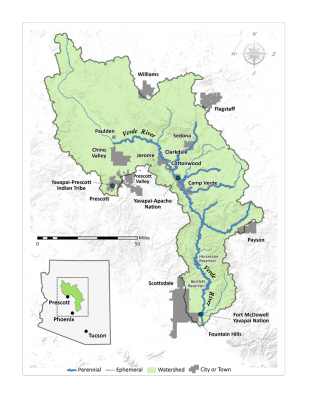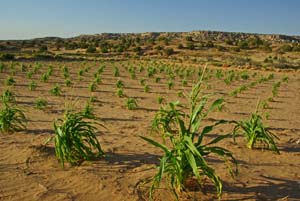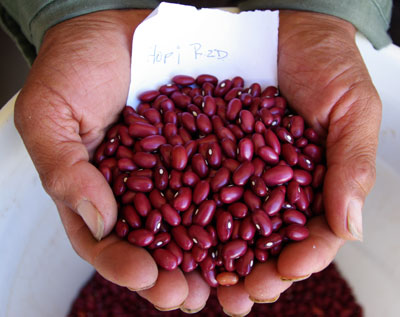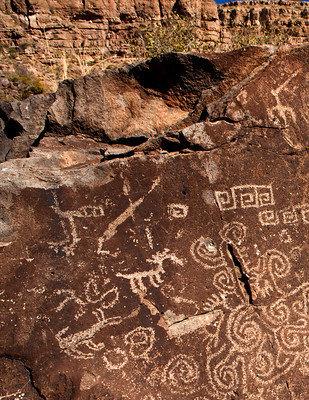UPDATE August 2016
VERDE VALLEY LAND PRESERVATION METEMPYRION GRANT 2015
Report for the August 2016 Metempyrion Foundation Board Meeting

This small local group has become less active in recent years, but since the July 2015 meeting at which Metempyrion Foundation gifted a grant of $1,000 along with guidance to reactivate community participation through education about the environment, they have deliberated on how best to use the funds.
I contacted Steve Estes, President 928.301.9086 a couple of weeks ago for an update knowing that their annual board meeting was in July. He called to say they voted to assist 2 separate environmental projects and asked to which we would prefer that our grant be allocated.
1. Through advocacy to assist in a matching grant challenge of $5,000 to the One for the Verde which is a local organization focusing on cleaning up the Verde River. This river is on the list of the top 12 ‘endangered’ rivers in the United States, due to leaching of toxins from the early 1900’s Jerome AZ mining era.
2. Assisting the Red Rock National Monument political process for extending ‘open land’ around Sedona AZ. These are the people who bulldogged their way into the July 2015 meeting when they found out that a funder would be contributing a grant. We were asked for input about this from a member of VVLP about 8 months ago and sent in a supplemental report, including that they take advice from Mr. Diehl on their own board as to how difficult it is to get measures passed. He had worked on the earlier proposition #12 some years ago.
Bill Russell our VP was instrumental in cleaning up and preserving a Pennsylvania river 30 years ago so the nearly extinct wildlife could flourish again. The coal mining and steel smelting in the area had caused severe damage, but his group’s efforts were successful and the fish are abundant for sport and natural harmony once again.
We have voted for our grant to be used for the number 1 option presented. A written permission to this effect will be sent on to their board.
Hopi Well Project 2007 - 2015
|

|

|

|

|
HOPI BACKGROUND
The Hopi Indians of northeastern Arizona are a people well rooted to the Earth that hold great wisdom from ages long past. Carrying on with the traditions of their ancestors the Hopi have carved out a path of cultural distinction and maintained an ancient way of life for many centuries. This sacred life of tradition is now, however, being forced to adapt to the ideals of the outside world as well as the even more imminent threat of environmental change.
The high desert of the Colorado Plateau is an arid and unforgiving land with scarce resources and over the last few decades this situation has steadily worsened. Once abundantly flowing streams and wells have subsided or all together disappeared over the last couple of generations and now the basic necessities of life are becoming harder and harder to gather. Many Hopi now have to make long and short term decisions about their future on the reservation, more and more are finding no other choice but to leave the ancient lands.
At one time the Hopi had access to a relatively abundant water supply coming from a number of local springs as well as from the Colorado and Little Colorado rivers. Using this all important life resource the Hopi developed their own specialized methods of agriculture and built a thriving community that spread throughout the four corners region of modern day America. Eventually they were given the nickname "dry-farmers" because of their particular planting techniques, which overcame reduced water supply and low soil fertility. The Hopi survived for many generations using these methods and as a result they have occupied the same lands continuously without any major displacement. In fact the Hopi village of Old Oraibi is thought to be the oldest continuously inhabited settlement in North America.
After being confined to a US government reservation area in 1882, which is positioned within and completely surrounded by the Navajo, the Hopi have gone through a gradual decline in population. Land and water disputes with the Navajo still continue to the present day, though the greater issue of having to merge with the white man's ways has taken much more of a toll on the Hopi. The Hopi face more then cultural issues however as the lack of water is now bringing up many new health problems throughout the community. Families that were once able to grow all of their food independently now have to rely on fast food and other processed products to sustain their diet, which is leading to many new health issues on the reservation. Native Americans are in general more susceptible to things like heart disease and diabetes, the Hopi people aren&39;t showing any exception to this with cases of both conditions on the rise. Without water not only is a traditionally simple and nutritious diet being lost, but with it also goes the health of the people.
Diversion of water to urban areas and industrial operations along with a regional drought has dwindled water supplies on the reservation. Faithfully flowing springs and old wells in the area, like those at Shungopavi and Kykotsmovi, have either decreased in volume or gone away entirely. In some cases people have to drive nearly 30 miles one way in order to collect water for their basic needs and over 40% of homes on the reservation are without running water. This problem is more then just inconvenient it means that there is little to no water available for farming in most areas, which creates a ripple effect of need throughout the community. Over the last few decades this inability to grow crops along with the modern day necessity for income has created what could be described as an exodus from the Hopi land. This breakdown and dispersal in the Hopi community continues to increase and an ancient way of existence is slowly being lost in the process. With more water available this situation could be lessened and Hopi independence would be a few steps closer to being restored.
A recent 2012 Arizona State settlement bill, which intended to secure water rights for the Hopi as well as Navajo people in the area, was dissolved after being rejected by both tribes. Arizona senators John McCain and Jon Kyl were quick to show their disapproval for this decision, but they also failed to mention the many ambiguities present within the proposed bill. The main issues causing concern for the tribes were provisions within the bill that would have diverted water to a coal-fired power plant as well as the attachment of unrelated legislation that would have renewed mining leases in the area. Also there was never any clear cut plan as to what would be done with the purported $350 million in funding to actually get water to the native people.
HOPI WELL PROJECT CONCLUSION
What has been accomplished is an opening in awareness on a Human Relations level. The Hopi Well Project expanded communications between the Hopi Tribal Government and Hotevilla Village personnel regarding water resources management. The participation of the Third Mesa Water Clan in the community with Hotevilla Village Council members has enhanced common community efforts of organization. This has been a process of education, responsibility and cooperation among community personnel and tribal members.
It has also been an educational intercultural exchange involving people in the greater United States who before this knew little about life on the Hopi Reservation. Lectures and radio interviews to inform the greater audience have increased awareness of Hopi culture and ancient sustainable dry farming methods which are very relevant today.
At the September 4, 2015 the Hotevilla Village Board of Directors including the President, Water/waste water Manager, Treasurer for the village, and the Third Mesa Water Clan Leader met with Metempyrion Cultural Liaison to be updated and informed about future possibilities.
The Hopi Well Project DVD and the itemized 2012 Cost Estimate was turned over to the
Board as educational information. The limitations of the Solar/Wind Hybrid technology
and the reason why the project was shut down after drilling to a 660 ft. depth was discussed. The DVD shows how the equipment and the system would provide water for the community once water was located. Since these facets must be considered in any operation this information will be useful in any future project.
The project well had been capped in 2013 to protect the existing work on site which means that if a source of power to operate a pump at a greater depth could be financed, water could be brought to the surface for the community in the future. The possibility of extending the existing power lines beyond Hotevilla Village proper was mentioned. Although this would negate the need for a self reliant independent source of energy at the existing well location, solar and wind technology could be used elsewhere on Hopi land with the proper permission and cooperation among tribal members.
The Board had received one estimate quoted at $40,000 to repair the village well by replacing materials and pump. It was recommended that a 2nd estimate from another company be solicited. Discussion ensued on this topic.
An explanation of setting up an escrow account to hold the monies accumulated specifically for a particular community project ensures the project’s successful completion. This also minimizes the possibility of incidental reallocation of funds. When applying for funding from investors and granting organizations, that there is a substantial ‘seed grant’ amount already existing towards accomplishing the particular goal is stimulation for participation.
A check in the amount of $9,000 remaining in the Metempyrion Foundation Hopi Well Project account which would have covered the cost of the pump for the well project was then turned over to the Hotevilla Village Board of Directors toward the repair the existing village well. This transaction was duly signed by several members of the Hotevilla Village Board of Directors.
Prayers were made for the future success of providing water for the village and surrounding community of Third Mesa.
|





